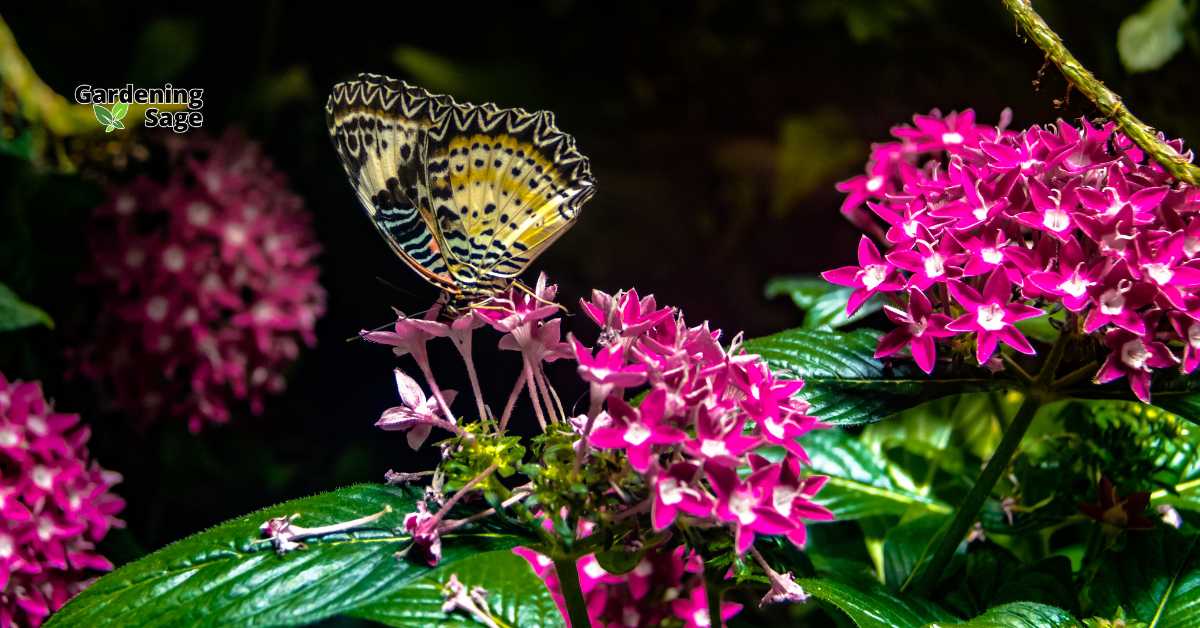Creating a butterfly garden is a rewarding journey that transforms your outdoor space into a vibrant sanctuary for these enchanting creatures. It’s not just about adding beauty to your home; it’s about fostering an environment where nature thrives.
This comprehensive guide, infused with beautiful home garden ideas and the best gardening tips, will walk you through the essentials of crafting a haven for butterflies, ensuring every step is filled with high-traffic keywords to make your garden—and this blog—a flourishing success.
Understanding Butterfly Preferences
Butterflies are drawn to areas that replicate their natural habitat, which includes sunny, open spaces, minimal wind, and a variety of host plants for their larvae. A deep understanding of these preferences is the cornerstone of creating a butterfly-friendly garden.
1. Location Is Key
Choosing the right location is crucial for a butterfly garden. An area that basks in at least six hours of sunlight daily and is shielded from strong winds creates an ideal environment.
Incorporating elements like hedges or low trees can offer the necessary shelter.
2. Select Butterfly-Attracting Plants
The heart of a butterfly garden lies in its plant selection. Opt for a mix of nectar-rich flowers and host plants to invite a diverse butterfly population. Key plant suggestions include:
- Milkweed: A must-have for monarch butterflies.
- Coneflowers (Echinacea): These provide vibrant and nectar-rich blooms.
- Lavender: Loved for its fragrance and nectar.
- Butterfly Bush (Buddleia): Its colorful spikes are irresistible to butterflies.
Plant diversity ensures that your garden caters to a wide range of butterfly species, enhancing its ecological value.
3. Plan for Continuous Blooms
A succession of blooms from early spring to late fall is essential to provide a consistent food source. This requires strategic planning and selection of plants with varied blooming periods to ensure your garden remains a butterfly haven throughout the seasons.
4. Watering Wisely
Butterflies need water but can’t access it from large, open sources. Creating a butterfly puddler, a shallow dish filled with sand and water offers a safe drinking spot.
This small addition can significantly increase your garden’s attractiveness to butterflies.
5. Embrace Organic Practices
The use of chemical pesticides and fertilizers is harmful to butterflies and their larvae. Adopting organic gardening practices ensures your garden is a haven for all its inhabitants, promoting a healthier ecosystem.
6. Provide Resting and Basking Spots
Butterflies often rest and bask in the sun to regulate their body temperature. Incorporating flat stones in sunny spots and planting flat-topped or clustered flowers provides perfect perches for these moments.
7. Design with Visibility in Mind
Arrange your butterfly garden so it can be easily viewed from your home. This allows you to enjoy the beauty and activity of your winged guests without disturbing them, adding a peaceful element to your living space.
8. Mulch for Moisture and Shelter
Mulching helps retain soil moisture, is beneficial for plants, and provides a cooler refuge for butterflies during peak heat. It’s a simple yet effective way to enhance the health and appeal of your garden.
9. Consider a Butterfly House
While not all species will use them, butterfly houses can add an attractive feature to your garden and offer shelter to some butterflies in adverse weather conditions.
10. Connect with Fellow Gardeners
Engaging with local gardening communities can offer valuable insights and additional tips tailored to your area’s specific conditions and butterfly species. This communal knowledge can be instrumental in the success of your garden.
Flutter into Bliss
By meticulously following these guidelines and incorporating the recommended plants, you can create an enchanting butterfly garden that not only enhances the aesthetic appeal of your home but also contributes positively to the local ecosystem.
A butterfly garden is more than just a plot of land; it’s a living, breathing space where nature’s delicate balance is celebrated and nurtured.














